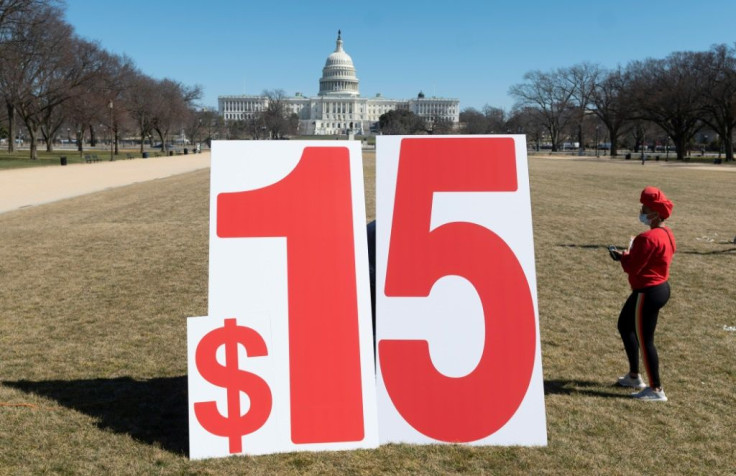
Hispanics tend to have disproportionately lower wages than their counterparts in other race groups, despite the national rate of people earning less than $15 an hour has dramatically decreased in the past two years.
The report comes from Oxfam, which analyzed data from both the Census Bureau and the Labor Department. They found that just 13% of workers in the U.S. are now earning less than that figure, compared to two years ago, where that number was almost 32%, Axios reports.
This, plus persistent inflation rates, is why the organization revised its definition of a low-wage worker this year, from those earning less than $15 an hour to those earning less than $17.
Following this definition adjustment, Oxfam found that fewer than 1 in 4 workers in the U.S. now fall into that category. That's more than 39 million people, including 34 million who are over age 20, according to the report. That's compared to the 52 million people in 2022 who earned less than $15 an hour.
But despite these advancements, minority wages remain exceedingly low and inequities continue to be present across the country, Axios reports.
Texas, a highly populated Latino state, sees one of the highest proportions of low-wage workers, alongside Mississippi and Oklahoma, which go by the federal minimum wage of $7.75 an hour.
Other states, by comparison, have much higher minimum wages. Washington state's minimum wage is $16.68, for example, and only about 11% of its workforce is earning less than $17 an hour, Oxfam reports.
Hispanics remain as the demographic with the most low-wage workers in the country, with 33%. Closely followed by Black people, with 32%. Conversely, 21% of white workers earn less than $17.
But women of color, particularly Latina and Hispanic women, tend to be vulnerable to these trends, as this group has the highest proportion of low-wage workers (just below 40%), followed by Black women (35%). And these numbers tend to be even higher when looking at certain states, according to the study.
Businesses can get away with paying their workers subminimum wages, as federal law still permits this for tipped workers. According to data from the National Women's Law Center, 69.1% of tipped wage workers nationally are women. This often times makes them particularly vulnerable to wage theft and sexual harassment in the workplace, the study argues.
To reverse this issue, the organization recommends a series of action steps the federal government can take.
One of them is Congress passing the Raise the Wage Act, which raises the federal minimum wage and eliminates exclusions in the national minimum wage laws. Another is states ending preemption policies that prohibit localities from raising the minimum wage at the local level.
© 2025 Latin Times. All rights reserved. Do not reproduce without permission.




